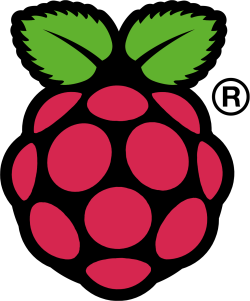About

What's a Raspberry Pi?
The Raspberry Pi is a credit-card sized computer that plugs into your TV and a keyboard. It’s a capable little PC which can be used for many of the things that your desktop PC does, like spreadsheets, word-processing and games. It also plays high-definition video. We want to see it being used by kids all over the world to learn programming
What's this page about?
This page contains links to SD card images for various operating system distributions. The minimum size SD card you can use is 2GB, but it is recommended to get a 4GB SD card or above.
To use an image file, you will need to unzip it and write it to a suitable SD card using the UNIX tool dd. Windows users should use Win32DiskImager. Do not try to drag and drop or otherwise copy over the image without using dd or Win32DiskImager – it won’t work. If you’re still not clear on what to do, the community on the Raspberry Pi Wiki has written a guide for beginners on how to set up your SD card.
The Raspberry Pi
The idea behind a tiny and cheap computer for kids came in 2006, when Eben Upton and his colleagues at the University of Cambridge’s Computer Laboratory, including Rob Mullins, Jack Lang and Alan Mycroft, became concerned about the year-on-year decline in the numbers and skills levels of the A Level students applying to read Computer Science in each academic year. From a situation in the 1990s where most of the kids applying were coming to interview as experienced hobbyist programmers, the landscape in the 2000s was very different; a typical applicant might only have done a little web design.
Something had changed the way kids were interacting with computers. A number of problems were identified: the colonisation of the ICT curriculum with lessons on using Word and Excel, or writing webpages; the end of the dot-com boom; and the rise of the home PC and games console to replace the Amigas, BBC Micros, Spectrum ZX and Commodore 64 machines that people of an earlier generation learned to program on.
There isn’t much any small group of people can do to address problems like an inadequate school curriculum or the end of a financial bubble. But we felt that we could try to do something about the situation where computers had become so expensive and arcane that programming experimentation on them had to be forbidden by parents; and to find a platform that, like those old home computers, could boot into a programming environment. From 2006 to 2008, Eben designed several versions of what has now become the Raspberry Pi; you can see one of the earliest prototypes here.
By 2008, processors designed for mobile devices were becoming more affordable, and powerful enough to provide excellent multimedia, a feature we felt would make the board desirable to kids who wouldn’t initially be interested in a purely programming-oriented device. The project started to look very realisable. Eben (now a chip architect at Broadcom), Rob, Jack and Alan, teamed up with Pete Lomas, MD of hardware design and manufacture company Norcott Technologies, and David Braben, co-author of the seminal BBC Micro game Elite, to form the Raspberry Pi Foundation to make it a reality.
Three years later, we’re just going into mass production through licensed manufacture deals with element 14/Premier Farnell and RS Electronics – although it’s just the beginning of the Raspberry Pi story.
We’ve had enormous interest, support and help from the educational community, and we’ve been delighted and a little humbled by the number of enquiries from agencies and people far away from our original targets for the device. Developing countries are interested in the Raspberry Pi as productivity devices in areas that simply can’t afford the power and hardware needed to run a traditional desktop PC; hospitals and museums have contacted us to find out about using the Raspberry Pi to drive display devices. Parents of severely disabled kids have talked to us about monitoring and accessibility applications; and there seem to be a million and one people out there with hot soldering irons who want to make a robot.
We don’t claim to have all the answers. We don’t think that the Raspberry Pi is a fix to all of the world’s computing issues; we do believe that we can be a catalyst. We want to see cheap, accessible, programmable computers everywhere; we actively encourage other companies to clone what we’re doing. We want to break the paradigm where without spending hundreds of pounds on a PC, families can’t use the internet. We want owning a truly personal computer to be normal for children. We think that 2012 is going to be a very exciting year.
Source: http://www.raspberrypi.org/about
The 5 latest images
| Direct download | Torrent | Size | Uploaded | SHA-1 checksum | More information |
|---|
Raspberry Pi is a trademark of the Raspberry Pi Foundation
Raspberry Pi Download Mirror © 2012-2025 WindowsWiki